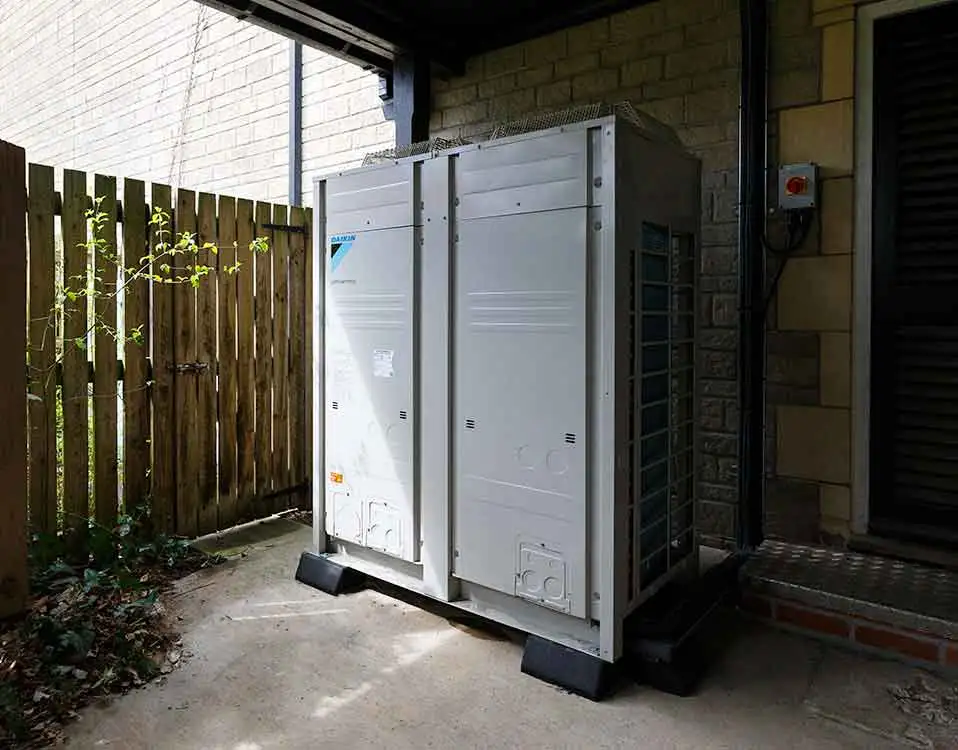Challenges and Solutions in Implementing Renewable Energy Projects
In commercial properties, achieving sustainability has become a prioritised goal. Adopting renewable energy technologies such as solar photovoltaic (Solar PV) systems and air source heat pumps (ASHPs) has become essential. These solutions not only help in reducing operational costs through energy savings but also promote environmental sustainability. However, significant challenges come with this transition, including investment hurdles and technical complexities of integrating these systems into existing buildings.
In this blog post, we will discuss the implementation of Solar PV and ASHPs in commercial properties and explore practical solutions to overcome common barriers. We’ll cover financial concerns and optimising system integration for efficiency and reliability. Our ultimate goal is to help commercial property owners harness the power of renewable energy, paving the way for a more sustainable and economically viable future in the commercial sector.


Renewables Technologies for Commercial Properties
Solar Photovoltaic (PV) Systems are a type of technology that captures sunlight and turns it into electricity. This technology provides a clean and sustainable power source for commercial buildings, which reduces grid dependency and energy costs. Solar PV systems can be placed on rooftops or land, making them versatile. This feature makes it suitable for various commercial applications, from small businesses to extensive industrial facilities. Not only does investing in solar PV lower energy bills, but it also enhances a property’s green credentials, which contributes to corporate sustainability goals and potentially increases real estate value.
Air Source Heat Pumps (ASHPs) are an efficient alternative to traditional HVAC systems, as they extract heat from the outside air to heat and cool buildings. They work particularly well in mild to moderately cold climates, providing both heating in the winter and cooling in the summer. For commercial properties, ASHPs are a versatile and energy-efficient solution that can significantly reduce heating costs and help achieve environmental targets. Compared to ground-source heat pumps, ASHPs have lower installation costs and can be retrofitted into existing buildings or designed into new constructions.
Implementing these technologies can help commercial properties achieve sustainability and energy independence by overcoming traditional barriers through innovative design and strategic planning.


Challenges in Renewable Implementation for Commercial Properties
Installing solar PV systems can pose several challenges, primarily the significant initial investment and the requirement for a structurally sound and unobstructed space for installation. Commercial buildings must have enough roof space free from shade and structural limitations, which can significantly impact system efficiency and feasibility. Also, navigating the complex web of local regulations and obtaining the necessary permits can cause project delays and increase costs.
Integrating existing heating and cooling systems with ASHPs can be challenging, especially in older buildings where retrofitting may require significant modifications. Additionally, ASHPs may be less efficient in colder climates, which raises concerns about their performance and reliability as a primary heating source in such environments. Therefore, it is essential to carefully consider system design and supplemental heating solutions to ensure comfort and efficiency throughout the year.
Both renewable energy technologies and energy-efficient systems are facing challenges in public perception. Misconceptions about efficiency, reliability, and return on investment (ROI) can hinder their uptake. Technical solutions alone are not enough to overcome these barriers. Effective communication strategies are also necessary to educate property owners on the long-term benefits and viability of investing in renewable energy.
Solutions for Renewable Implementation in Commercial Properties
Overcoming the challenges of implementing renewable energy solutions in commercial properties requires a multifaceted approach. Financial incentives, such as grants, low-interest loans, and tax benefits, can significantly reduce the upfront costs of solar PV systems and ASHPs, making them more accessible to property owners. Leasing options can offer a low or no upfront cost solution, allowing businesses to benefit from renewable energy with minimal investment.
Technical advancements and innovative design solutions are crucial in maximising the efficiency and integration of renewable technologies. Using high-efficiency panels and smart inverters for solar PV systems can optimise energy production even in limited spaces. Similarly, for ASHPs, selecting units designed for performance in colder climates can extend their usability and efficiency. Implementing hybrid systems that combine ASHPs with traditional heating methods can provide a reliable and efficient heating solution throughout the year.
Strategic planning and professional consultation are essential for navigating local regulations and integrating renewable systems into existing infrastructures. Expertise in renewable energy solutions can help streamline the process and ensure that installations meet all regulatory requirements. Working with contractors like UES can also identify the most suitable technologies and design custom solutions that address each property’s specific challenges.
Commercial properties can successfully implement renewable energy technologies by addressing these challenges through financial support, technical innovation, and strategic planning. This approach contributes to environmental sustainability and enhances economic viability and energy independence, leading the way for a more sustainable future in the commercial sector.
